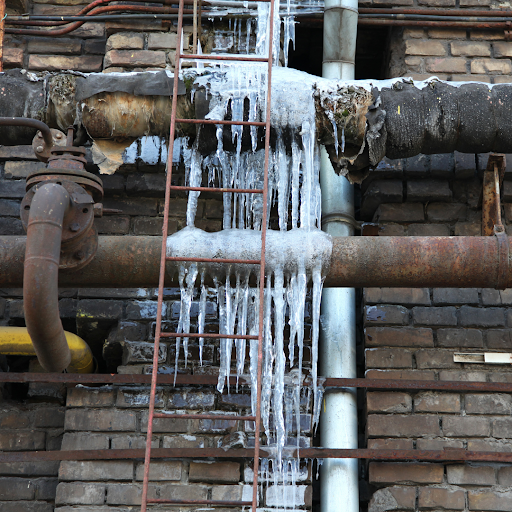Crucial Advice to Prevent Frozen Pipes in Cold Weather
Crucial Advice to Prevent Frozen Pipes in Cold Weather
Blog Article
Have you been interested in suggestions on Helpful Tips to Prevent Frozen Pipes this Winter?

Cold weather can wreak havoc on your plumbing, especially by freezing pipelines. Right here's exactly how to avoid it from occurring and what to do if it does.
Introduction
As temperature levels decline, the risk of frozen pipelines increases, possibly leading to pricey repairs and water damage. Recognizing exactly how to stop icy pipes is important for house owners in chilly climates.
Understanding Icy Pipes
What triggers pipes to freeze?
Pipes ice up when subjected to temperature levels below 32 ° F (0 ° C) for prolonged durations. As water inside the pipes freezes, it increases, taxing the pipe wall surfaces and potentially triggering them to rupture.
Risks and problems
Frozen pipes can cause water supply interruptions, building damage, and expensive fixings. Ruptured pipes can flooding homes and cause comprehensive architectural damage.
Indications of Frozen Piping
Identifying frozen pipelines early can stop them from breaking.
How to determine frozen pipes
Look for decreased water flow from taps, uncommon odors or noises from pipelines, and visible frost on exposed pipes.
Avoidance Tips
Shielding susceptible pipelines
Cover pipelines in insulation sleeves or make use of warm tape to secure them from freezing temperatures. Concentrate on pipes in unheated or external areas of the home.
Heating methods
Keep indoor spaces properly warmed, specifically locations with plumbing. Open up closet doors to enable cozy air to circulate around pipelines under sinks.
Shielding Exterior Plumbing
Garden pipes and outside taps
Separate and drain yard hose pipes prior to wintertime. Install frost-proof faucets or cover exterior taps with shielded caps.
What to Do If Your Pipelines Freeze
Immediate actions to take
If you believe frozen pipes, keep faucets open to ease stress as the ice melts. Use a hairdryer or towels taken in hot water to thaw pipelines slowly.
Long-Term Solutions
Structural modifications
Consider rerouting pipes far from outside walls or unheated areas. Include additional insulation to attics, cellars, and crawl spaces.
Upgrading insulation
Invest in top quality insulation for pipelines, attic rooms, and wall surfaces. Proper insulation helps preserve consistent temperatures and decreases the risk of frozen pipelines.
Conclusion
Avoiding frozen pipes needs aggressive actions and quick feedbacks. By recognizing the reasons, signs, and safety nets, home owners can protect their pipes during cold weather.
5 Ways to Prevent Frozen Pipes
Drain Outdoor Faucets and Disconnect Hoses
First, close the shut-off valve that controls the flow of water in the pipe to your outdoor faucet. Then, head outside to disconnect and drain your hose and open the outdoor faucet to allow the water to completely drain out of the line. Turn off the faucet when done. Finally, head back to the shut-off valve and drain the remaining water inside the pipe into a bucket or container. Additionally, if you have a home irrigation system, you should consider hiring an expert to clear the system of water each year.
Insulate Pipes
One of the best and most cost-effective methods for preventing frozen water pipes is to wrap your pipes with insulation. This is especially important for areas in your home that aren’t exposed to heat, such as an attic. We suggest using foam sleeves, which can typically be found at your local hardware store.
Keep Heat Running at 65
Your pipes are located inside your walls, and the temperature there is much colder than the rest of the house. To prevent your pipes from freezing, The Insurance Information Institute suggests that you keep your home heated to at least 65 degrees, even when traveling. You may want to invest in smart devices that can keep an eye on the temperature in your home while you’re away.
Leave Water Dripping
Moving water — even a small trickle — can prevent ice from forming inside your pipes. When freezing temps are imminent, start a drip of water from all faucets that serve exposed pipes. Leaving a few faucets running will also help relieve pressure inside the pipes and help prevent a rupture if the water inside freezes.
Open Cupboard Doors
Warm your kitchen and bathroom pipes by opening cupboards and vanities. You should also leave your interior doors ajar to help warm air circulate evenly throughout your home.

I'm very serious about How to Prevent Your Pipes From Freezing and I really hope you liked my page. For those who liked our blog post if you please consider to pass it around. We thank you for reading our article about Winter Plumbing Precautions: Preventing Frozen Pipes.
Schedule Appointment Report this page